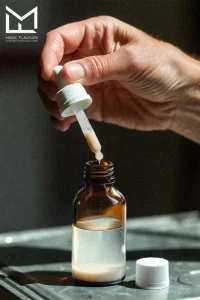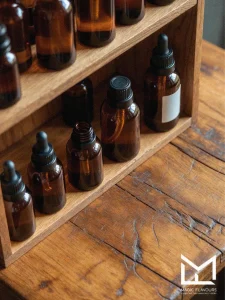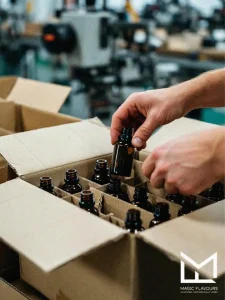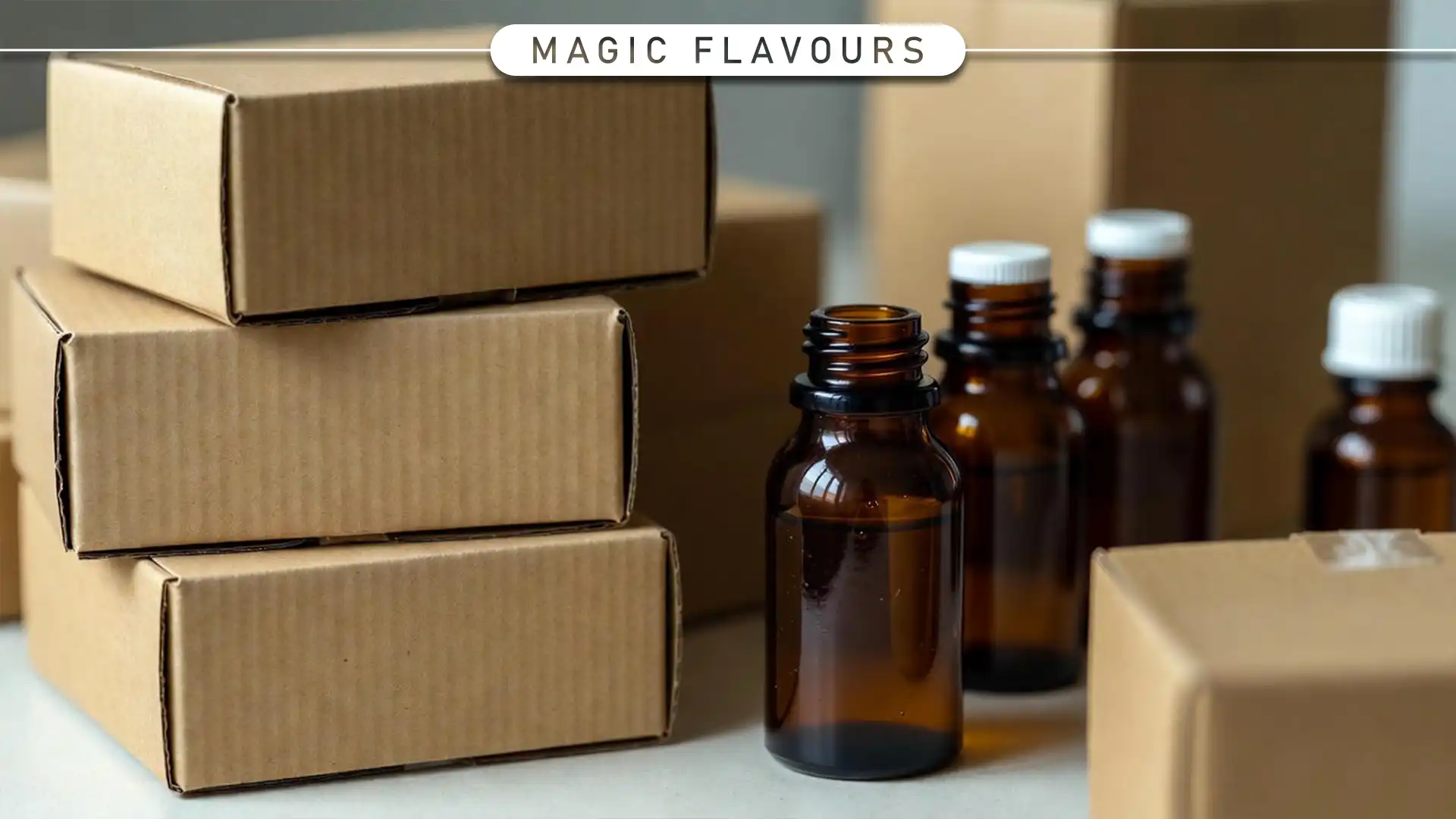Why Proper Temperature Control and Storage Conditions of Essences Are Critical for Flavors and Fragrances
In the world of flavor and fragrance production, precision doesn’t end with formulation. One of the most underestimated, yet absolutely crucial, steps in preserving product integrity is proper storage and temperature control and storage conditions of essences in the Production Line. While the focus often falls on the creative process of developing aromas and tastes, what happens after an essence is created can make or break its performance in the final product.
Essential oils and aromatic compounds are highly sensitive substances. Even slight exposure to heat, light, or humidity can lead to chemical degradation, oxidation, or evaporation. This means that a premium essence, if stored improperly, can lose its potency, alter its intended profile, or even become completely unusable.
Unfortunately, many production lines still overlook the importance of environmental control. Bulk containers are sometimes stored in inconsistent temperatures, exposed to direct sunlight, or sealed inadequately, all of which accelerate breakdown and reduce shelf life.
The consequences?
🔹 Inconsistent product quality
🔹 Loss of key aromatic notes
🔹 Wasted raw materials
🔹 Higher costs due to rework or spoilage
But the good news is:
These issues are preventable. With the right storage practices in place and temperature control and storage conditions of essences, including protection from light and moisture regulation, companies can ensure that every drop of essence maintains its integrity from warehouse to production line.
In this article, we’ll explore the science behind flavor and fragrance stability, the risks of improper storage, and the best practices that can help your production team avoid costly mistakes, and deliver consistently excellent results.
The Chemistry Behind Fragility: How Temperature Control and Storage Conditions of Essences Affect Their Stability
Not all essences are created equal, and their chemical structure has everything to do with how stable (or unstable) they are during storage and production and Storage Conditions. Some essential oils and flavoring compounds are made up of highly volatile molecules, which means they can evaporate or break down quickly if exposed to the wrong conditions and no Temperature Control and Storage Conditions.
So, what causes this fragility?

The three most common enemies of aroma and flavor stability are:
- Oxygen
– Oxygen triggers oxidation, a chemical reaction that alters the molecular structure of essential oils. Over time, this can dull a scent, change a flavor profile, or even cause unwanted off-notes. Oils like citrus or natural herbs are especially prone to this. - UV Light
– Sunlight, or even strong artificial light, can break chemical bonds in aromatic compounds, especially in natural essences. This leads to photo-degradation, where the scent or taste fades, shifts, or becomes unpleasant. - Heat
– Elevated temperatures increase the rate of both oxidation and evaporation. In production environments without climate control, even short exposure to high heat can reduce the potency and shelf life of sensitive ingredients.
This means that two different flavor oils stored under identical conditions might age very differently depending on their molecular makeup. For example, terpenes (common in citrus oils) are extremely volatile and can degrade quickly, while esters or aldehydes might be more stable — but still sensitive to light or heat. That is why temperature control and storage conditions of essences must always be applied carefully.
What’s the solution?
✔ Store essences in airtight containers to minimize oxygen exposure
✔ Use amber glass or stainless steel to block light
✔ Maintain cool, stable temperatures in storage and production areas
✔ Avoid frequent opening of bulk containers to reduce oxidation and contamination risks
Understanding the chemistry behind each essence empowers production teams to tailor their storage and handling methods, and protect the integrity of every formula, from development to delivery.
Industry Standards for Storing Essences: Temperature Control and Storage Conditions Every Professional Should Follow

When it comes to preserving the integrity of flavors and fragrances, relying on general assumptions is not enough. The industry has developed clear storage standards for a reason, because each type of essence behaves differently depending on its volatility, origin (natural or synthetic), and chemical composition.
Let’s break down the two key pillars of proper storage: temperature control and container selection
Recommended Temperatures for Different Essence Types
Highly volatile or citrus-based essences:
These require cooler environments, ideally between 5°C to 15°C (41°F to 59°F), to prevent rapid evaporation or degradation and Temperature Control and Storage Conditions. Terpene-rich oils fall into this category and are particularly sensitive to heat.
Natural essential oils:
Most natural oils are best stored at room temperature, ideally in the range of 15°C to 25°C (59°F to 77°F), in stable conditions without sudden temperature shifts.
Synthetic flavor and fragrance compounds:
These tend to be more chemically stable and can tolerate a wider temperature range, but should still be kept below 30°C (86°F) to maintain quality over time.
It’s worth noting that temperature consistency is often more important than just keeping things cold. Fluctuations in temperature can cause condensation inside containers, leading to microbial growth or chemical reactions that degrade the essence.
Packaging: The Right Container Makes All the Difference

The material of the storage container plays a crucial role in protecting essences from external threats:
Amber Glass Bottles:
Industry favorite for a reason, they block UV light and are non-reactive. Ideal for small to medium-sized quantities of both natural and synthetic oils.
Stainless Steel Tanks:
Best for bulk storage in industrial environments. They offer excellent durability, prevent oxidation, and maintain internal temperature more effectively than plastic.
High-Density Polyethylene (HDPE) Plastic:
Used in some facilities due to cost and convenience, but only suitable for short-term storage or for less sensitive synthetic compounds. Some plastics can leach or allow air penetration over time.
In short: Using the right storage temperature and packaging isn’t just about compliance, it’s about product integrity, safety, and shelf life. Following these standards helps ensure that what you deliver to your customers is exactly what your R&D team intended: powerful, precise, and high-quality.
Production Line Essentials: Common Challenges and Smart Solutions in Using Flavor Essences
Integrating essences into a production line isn’t as simple as adding a few drops and hitting “mix.” These highly sensitive ingredients require special care at every stage, from pumping and mixing to transferring and bottling. One misstep in handling, and you risk losing the aroma, consistency, or even safety of the final product.
Let’s take a closer look at the most common operational challenges, and how to overcome them.
1. Preventing Evaporation During Mixing
One of the biggest concerns in high-speed manufacturing is volatilization, the process where lighter aroma compounds escape into the air during mixing. This is especially problematic with citrus-based or alcohol-based essences, which can lose a large portion of their top notes before they even make it to the packaging stage.
Solution:
Use closed mixing systems wherever possible
Minimize air exposure and agitation speed during blending
Consider adding essences at a later stage in the mixing process, when temperatures are cooler
2. Temperature Optimization in Tanks, Pumps, and Transfer Lines
The temperature and Storage Conditions at which essences travel through the production line can significantly affect their stability. If pipes or pumps are too warm, even by a few degrees, sensitive compounds can degrade or alter chemically, resulting in off-notes or inconsistent taste.
Solution:
Install temperature control systems along critical points of the production line
Use insulated transfer hoses for temperature-sensitive formulations
Monitor in-line temperatures with automated sensors for real-time adjustment
3. Regular Sampling and Quality Control
Even if your equipment is flawless, slight variations in raw materials or processing conditions can result in batch-to-batch inconsistencies. Without regular sampling and testing, and without proper temperature control and storage conditions of essences, you risk delivering a product that deviates from the expected profile — which can affect brand trust and repeat orders.
Solution:
Set up routine sensory analysis checkpoints and Storage Conditions during and after production
Use analytical instruments (e.g., GC-MS or refractometers) to verify key volatile components
Keep detailed logs of ingredient lot numbers, temperature trends, and mixing times for traceability
In short: using essences in production demands more than just good ingredients, it requires a tightly controlled environment, cross-functional coordination, and a commitment to quality at every stage.
Leveraging Technology for Monitoring and Controlling Storage Conditions

In today’s fast-paced production environments, relying on manual checks to ensure proper storage conditions for essences is simply not enough. The slightest deviation in temperature, humidity, or light exposure can degrade quality, causing costly product losses or customer dissatisfaction. This is where modern technology steps in as a game-changer.
1. Sensors, Automation, and Real-Time Monitoring
Imagine having a system that continuously tracks every critical factor affecting your essence storage, from temperature fluctuations to humidity spikes, and instantly alerts your team if something goes off track. That’s the power of real-time monitoring.
- Sensors: High-precision temperature, humidity, and light sensors can be strategically placed in storage tanks, warehouses, and production lines.
- Automation: These sensors can automatically adjust environmental controls, like cooling systems or ventilation, keeping conditions within the optimal range without human intervention.
- Alerts: Automated alerts via SMS, email, or dedicated apps ensure that any anomalies are caught immediately, allowing for quick corrective action.
2. Smart Software for Inventory Management and Alerts
Managing essences isn’t just about storage conditions, it’s also about knowing what you have, where it is, and how long it’s been stored. Smart inventory management software helps streamline this process:
- Tracks batch numbers, expiration dates, and storage locations in real time
- Generates alerts for upcoming expirations or quality checks
- Provides historical data to identify trends and optimize procurement and usage
In summary: integrating sensor-based automation and smart software solutions is no longer a luxury, it’s a necessity for companies serious about maintaining the integrity and quality of their flavor essences throughout production and storage.
Conclusion: Proper Essence Storage Is Not Just a Technical Task, It’s a Competitive Advantage
When it comes to essences, storage is often seen as a behind-the-scenes operation, a routine step that just “needs to be done.” But the truth is far more strategic. How you store and handle these delicate ingredients can be the difference between a product that delights customers and one that falls flat.
Why Proper Storage Sets Your Final Product Apart
Essences are the soul of your product’s flavor and aroma. If compromised, the entire sensory experience suffers, and so does your brand reputation. On the other hand, meticulous storage practices — supported by proper temperature control and storage conditions of essences — preserve freshness, consistency, and potency, allowing your product to shine in a crowded marketplace.
Recommendations for Manufacturers Across Industries
Whether you’re in food and beverage, cosmetics, tobacco, or chemical manufacturing, these principles hold true:
- Invest in temperature- and humidity-controlled environments tailored to your essence types
- Implement real-time monitoring and alert systems to catch problems before they escalate
- Train your teams on best handling practices to minimize exposure and degradation
- Regularly review and update your storage protocols as new technologies and research emerge
In the end, proper essence storage isn’t just about protecting ingredients, it’s about building trust, ensuring quality, and gaining a competitive edge that your customers will notice and appreciate.
